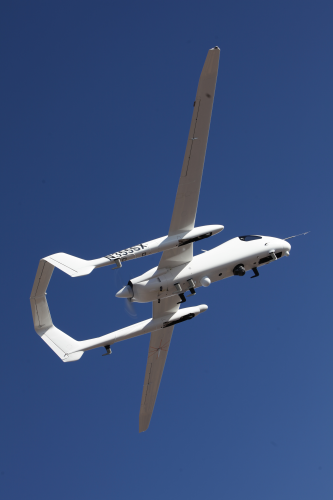
As lead for the Firebird programme, Northrop Grumman developed the unmanned systems architecture, control and mission systems. It chose Scaled Composites, an aerospace and speciality composites development company located in Mojave, California, to design, build and test the aircraft.
The first flight occurred just 12 months after the initial concept discussions.
Firebird offers the ability to operate multiple intelligence, surveillance, reconnaissance (ISR) and communications payloads simultaneously through a universal interface. Military users will be able to get real-time high-definition video, view infrared imagery, use radar and even listen in on communications signals – all at the same time.
Firebird was designed to be flown as a manned or unmanned aircraft and can be quickly modified for either option.
"We've harnessed the innovative techniques of Northrop Grumman and Scaled Composites to deliver an unprecedented information-gathering capability," said Paul Meyer, vice president and general manager of advanced programmes and technology for Northrop Grumman Aerospace Systems.
"Firebird addresses future budgetary constraints by combining the best of our piloted and unmanned ISR systems into a single solution ready for a variety of ISR missions."
"Military users will also find it much easier to exploit intelligence data from Firebird because the information is put into a single tool that allows them to easily make decisions," says Rick Crooks, Northrop Grumman's Firebird programme manager.
"The internal payload bay also does away with the need to carry external pods to house sensor payloads that can cause drag and affect how long the aircraft can stay in the air."




